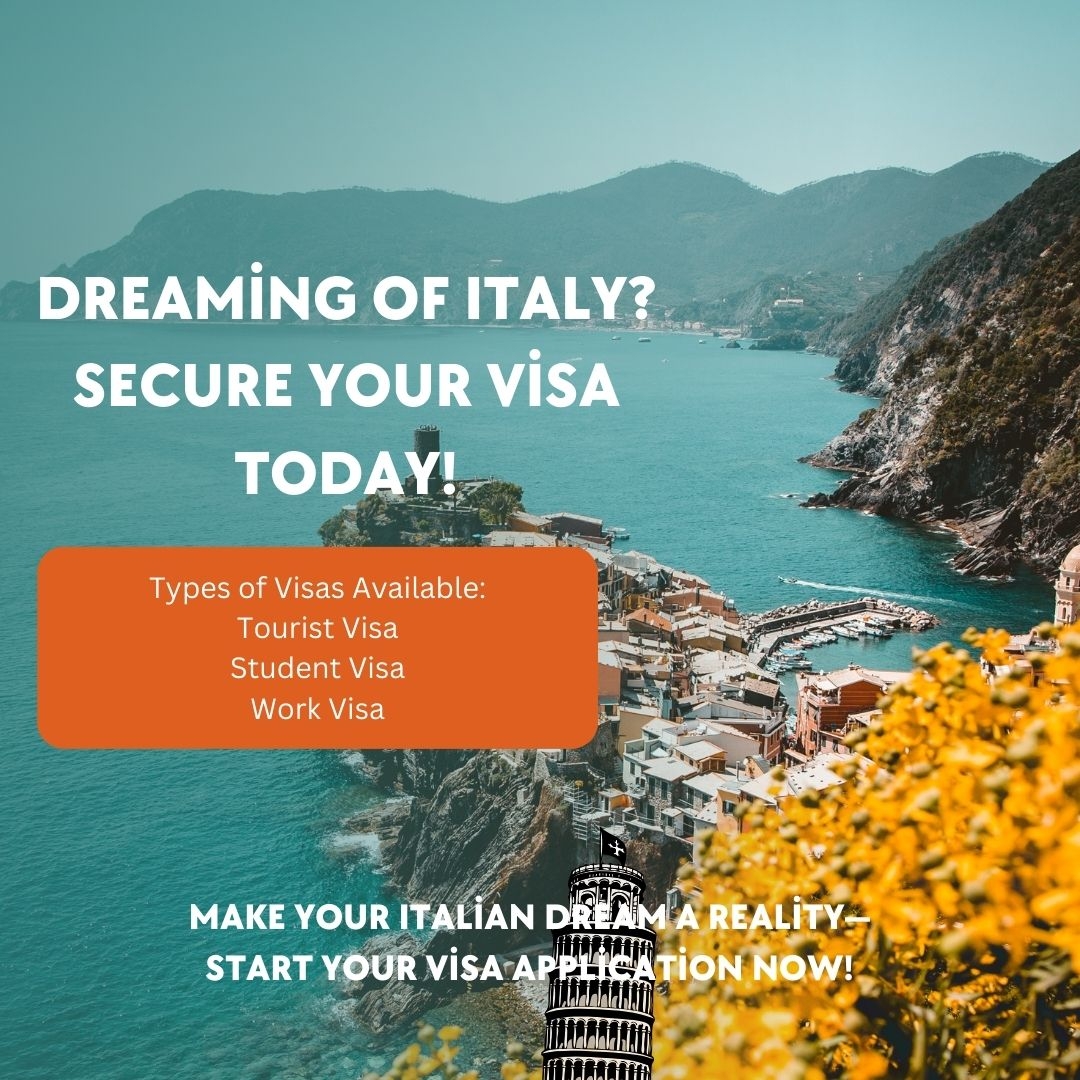Italy, renowned for its cultural heritage, picturesque landscapes, and culinary delights, is a top destination for travelers around the world. Whether you're planning a vacation, studying abroad, or pursuing work opportunities, understanding the Italy visa process is key to making your journey a reality.
What is an Italy Visa?
An Italy visa is an official document required for entry into Italy, depending on your nationality and the purpose of your visit. The visa allows you to enter and stay in Italy for a specified period, whether for tourism, business, study, or work. Italy, being a part of the Schengen Area, generally issues Schengen visas for short stays, but different visa types are available for varying needs.
Types of Italy Visas
-
Schengen Visa (Short-Stay Visa): This visa allows you to stay in Italy and other Schengen countries for up to 90 days within a 180-day period. It is ideal for tourism, business trips, or family visits.
-
National Visa (Long-Stay Visa): If you plan to stay in Italy for more than 90 days, you’ll need a national visa. This type includes:
-
Student Visa: For those attending educational programs longer than three months.
-
Work Visa: Required if you have a job offer or plan to work in Italy.
-
Family Visa: For joining family members who are legal residents or citizens of Italy.
Transit Visa: For travelers passing through Italy on their way to another destination. This visa is usually short-term and limited to the time required for the transit.
How to Apply for an Italy Visa
The process of applying for an Italy visa involves several essential steps:
-
Choose the Right Visa: Determine the visa type based on the duration and purpose of your stay.
-
Prepare Your Documents: Common requirements include a completed visa application form, a valid passport, recent passport-sized photos, travel insurance, proof of accommodation, and financial proof. Additional documents may be needed depending on the visa type.
-
Submit Your Application: Applications must be submitted in person at the Italian embassy, consulate, or an authorized visa application center in your country. Appointments are often required, so it’s important to plan ahead.
-
Attend the Visa Interview: Depending on the visa type, you may need to attend an interview where you’ll be asked about your travel plans, purpose, and stay details.
-
Wait for Processing: Processing times can vary. A Schengen visa typically takes about 15 days, while long-stay visas might require several weeks.
-
Receive Your Visa: Once approved, your visa will be stamped in your passport, allowing you entry into Italy.
Key Tips for a Successful Application
-
Start Early: Apply as early as possible, ideally three months before your intended travel date.
-
Double-Check Your Documents: Ensure all your paperwork is complete and accurate to avoid delays or rejections.
-
Understand Visa Conditions: Each visa type has specific conditions regarding the duration of stay and activities allowed, so make sure you’re fully informed.
Conclusion
Securing an Italy visa is a vital step for anyone planning to visit this captivating country. By understanding the visa types and following the application process diligently, you can ensure a hassle-free experience. Whether you’re exploring ancient ruins, studying at a prestigious university, or embarking on a new career, Italy offers endless possibilities, and the right visa will help you access them



